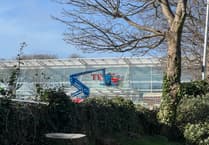We tend to know about the birds and the flowers but not so much about the tiny stuff such as invertebrates which are truly amazing.
So this year we will delve into the miniature world of these fascinating creatures
Invertebrates are important to our ecosystems, performing many important jobs like aerating soil, pollinating blossoms, and controlling plant pests.
Many insects, especially beetles, are scavengers, feeding on dead animals and fallen trees and so are the ultimate recyclers, putting nutrients back into the soil.
Plus, burrowing insects like ants and beetles, dig tunnels that provide channels for water, benefiting crops. Finally, all invertebrates fertilize the soil with the nutrients from their droppings.
However studies show a grim picture of the decline of insects across the planet.
A recent review predicted that at the current rates of decline 41% of the world’s insect species could become extinct over the next few decades.
Butterflies, moths, bees, wasps, and dung beetles are amongst those most at risk, along with freshwater insects such as stoneflies, caddisflies, and mayflies.
All of these we have on our island, and we will find out more about them in the coming months.
This month we are looking at the humble woodlouse, also known as a parson’s pig or granny grunter.
Why does it have these names? Well, if you keep woodlice in a jar, they can emit a smell full of ammonia which smells very like pig poop, hence the association with pigs.
But why granny or parson? Woodlice are associated with damp places, and unfortunately granny’s house and big old parsonages used to be damp!
Did you know that we have 16 different types of woodlice on island? Our most common species is probably the rough woodlouse.
Woodlice are flat, oval, and uniform grey with a thick, bumpy or smooth exoskeleton that have seven body segments, each with a pair of legs. Their closest relatives are actually shrimps and crabs. These little creatures don’t have a waxy exoskeleton like a lot of insects, which is why you will find them hiding away in damp places and under wood so that they don’t dry out.
They are fantastic scavengers eating wood, fugus, leaf litter, dead animals and poop, including their own!
Female woodlice are very caring mums and have a brood pouch like a wallaby.
The mother lays her eggs into this pouch and the offspring hatch inside it.
Even when they have left the pouch, the mother stays close to her young for a few months until they are mature.
These young are very tiny, about the size of a grain of rice.
Common rough woodlice usually live for two to three years.
Looking for woodlice is an excellent activity for children.
Take a tray with you when you search and pop the woodlice into it.
They are an excellent way to introduce your child to the world of invertebrates!
If you would like to know more about woodlice, the Field Studies Council do an excellent guide to them.
Or why not join the invertebrate group, who run monthly meetings and field trips in the summer.
More details are on Facebook page and mwt.im.
The Manx Wildlife Trust is the island’s leading conservation charity, looking out for and monitoring the Manx wildlife.




